FRANCOIS LUPOT II 1820 CA.
Just a look at the head of this magnificent cello bow is enough to figure out what was the reason for the closeness between the Francois Lupot II and the Tourte brothers, one owning such a beautiful wood and in unlimited quantities, is someone I would have hired even if he had not been able to work. For the Tourtes the luck was double; Lupot also had talent.

Cello bow Francois Lupot II 1820 ca.
It 's always an experience being in front of bows by artisans of this historical period. As you know, the modern bow was a creature with even a few years of life, there were no schools, but only individual talent that emerged from a primordial humus, playing in a personal way, free of canonical constraints, the "Bow " shape .

Our Lupot, is affected by many fortunes. Born into a family of craftsmen, his father Francois I and his brother Nicolas were luthiers, furthermore he is from Orleans, the home of fabrics .
Pernambuco, as you will recall, arrived in Europe at the end of the '600 through Portugal, and was imported because, thanks to very strong tannins, this wood was used to give the purple color to fabrics.
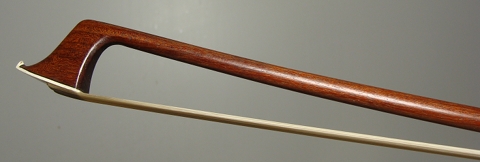

This was the second great Lupot's luck and this bow is the proof of it, this man has had access to some of the finest pieces of wood ever seen!
The second leads to the third, because with all the good things that he had, he managed to ingratiate the favor of the most important family of all time, the "Tourte". With them he improved not only technically, but also philosophically, marrying their selection criteria of building materials.
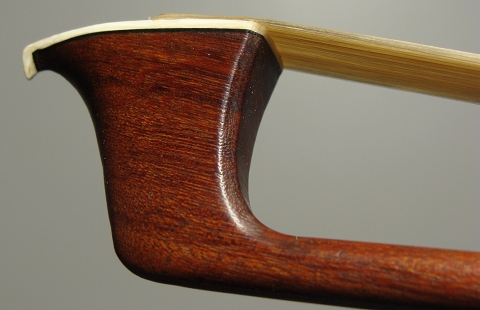

The material of ths bow is an example. Contrary to the modern period, where they preferred very dark and dense wood , in the Tourte school the important thing was that it played. Parameters such as color or density were considered very minor, other things were the fundamental ones.
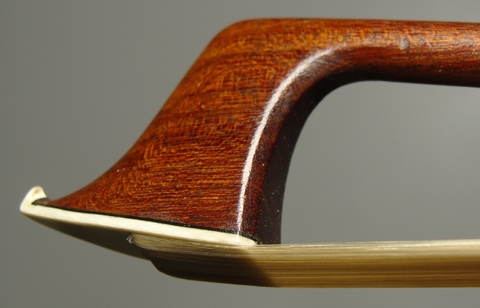

Although at this time the wood is dark brown, originally it was definitely much lighter. The density is very high, indeed it tends to the light, but as you can see from the photos, the cut is perfect, and the head is a dense web of medullary rays.
Thanks to this the material and the old mechanic the bow, after nearly two hundred years of life, is still holding the string in an evenly way from heel to head.

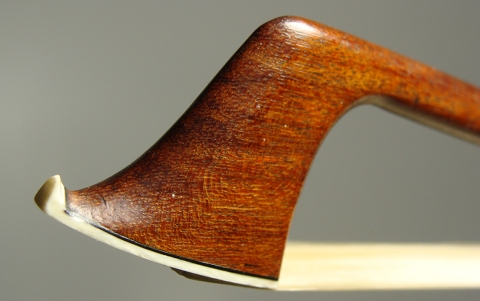
Speaking of style, the head is a classic example of the freedom in this era. Steep and very stretched forward, thanks to a harmonious taste, and probably also to the good teachers of the author, although owning proportions and geometries that could be proposed nowadays , the outcoming result is a very fluid head. This smoothness derives particularly from perfect proportions between the top of the bevel and the housing and is aided by the very full development of the cheeks, as you can see from the photos.

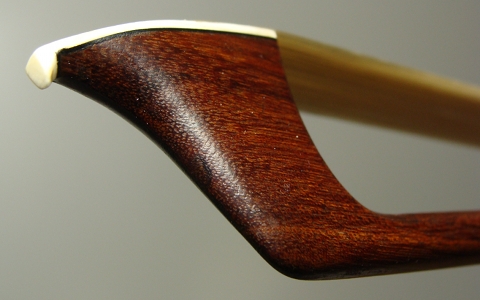
The curve model used is the old one, and the state of preservation and functionality confirm once more the superiority of this school compared to Voirin's .


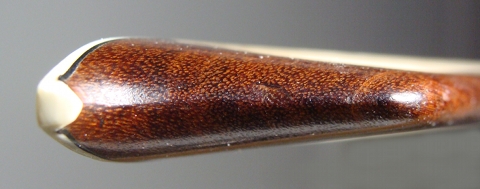
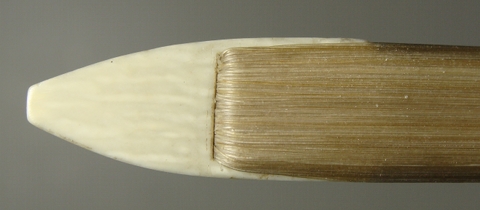

Before speaking of the frog, one word about ebony; Gabon!
It 'a wonderful piece of ebony, I would make everything to have a couple of blocks, unfortunately it is not possible to find it since years, I repeat , it is wonderful.
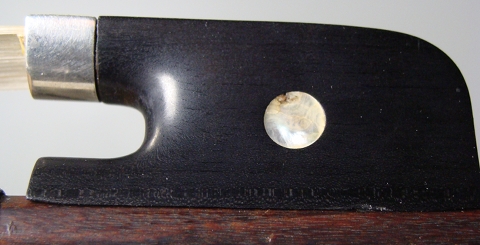

Also the frog is a classical / nonclassical. As in all his works, Lupot prefers soft, round lines, one can also perceive his teacher's shadow , but, as for the heads, every piece is history, although some of his features may be found

Speaking about the cello, in this author, the bowhair shape is usually very wide.
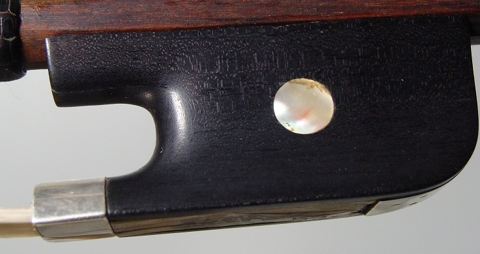
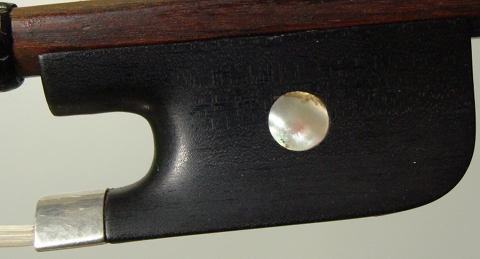
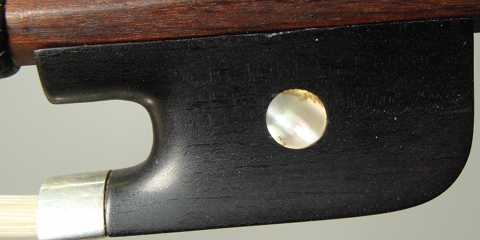

The button and the knees are the proof that every bowmaker doing this job for passion is, at the same time , a joyful player in his soul .
The luthier has to do only with wood, the bowmnaker, on the contrary, has a large number of toys available to play with. Silver, pearl, tortoiseshell, ivory, etc.., etc.., etc. ..
No reason induce him to put three nails on the turn of the knee, but that he enjoyed a lot doing it.

As for the button in silver foil, very finely hammered, he got crazy to do that.

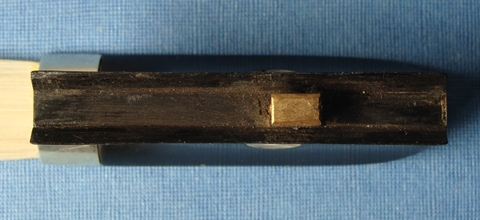
Although the silver coulisse was already in use since ten years, still many, if not most, artisans who for savings, or because they had not yet learned the technique to do it, Lupot will begin few years later, still left the ebony as naked.
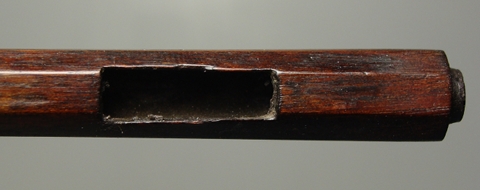

Specs and sizes
Stick: pernambuco of mediumj density and in light colour ; ancient curve.
69 cm length
Stick diameter at the collat 5,7 - 6,6 mm
Stick diameter at the winding 9,65 mm - 9,3 mm
Heel mortice 18 mm
Head: width 11,85 mm, height 28,3 mm, length 29,65 mm
Frog: Height 21 - 20, mm; Width 15,75 mm; Lengthezza 52 mm
Eye: single, diameter 8 mm
Button : length 14.25 mm (4,7 - 6,5 - 3,25)
So long.
Paolo
|